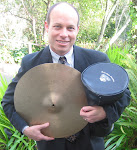Saturday, November 27, 2010
Race and Cultural Sensitivity in the Public Schools
California schools are witnessing an influx of Latino students, predominantly from Mexico. According to the Federal Department of Education, Latino students are now the majority ethnic group in California public schools. (Link here.) Teachers and administrators want to engage these students and make them feel welcome and valued, aiming to increase their academic performance. What is the best strategy to get “buy in” from these students?
Many believe that cultural awareness and sensitivity will increase participation of these students. Administrators believe, and I write “believe” on purpose, that if school staff demonstrates interest in Latino themes, these students will reciprocate by getting more involved in school activities, completing homework, pushing for parental involvement in PTA, and participating in athletics and clubs. This belief by administrators translates into assemblies highlighting famous Latinos, observation of holidays on the Mexican calendar, and celebration of Latino food, art, and music.
While I also believe that cultural awareness is useful and an important part of secondary education, increasing connection for all those in our community, dissuading students from holding ethnic stereotypes, and reinforcing the curriculums of world history, government, languages, art, and music, I do not believe it will achieve its stated purpose—to increase this population’s interest in school activities. Assuming that other groups, African-Americans, Native-Americans, Asians, Whites, Muslims, Jews, etc. do not react negatively to the lack of attention for their cultural heritage, will Latino cultural activities raise school grades and test scores?
Some empathy about what it is like to be a minority student may show whether these programs will work. As a Jewish kid in a lily-white suburb, I felt that students did not understand my background and culture. Would I have felt more at home if all attended school assemblies describing the achievements of Albert Einstein, Jonas Salk, and Levi Strauss? Would I have felt more connected to my school if they made everyone watch Roman Polansky movies, listen to Simon and Garfunkle, and attend a bagel fest? The answer to these questions, of course, is no. I felt less connected to my school, not more, when I was embarrassed by being asked to bring in a few Hanukkah songs to balance the Christmas concert play list.
There is a better way to connect kids, all kids, to school activities. Teachers can and should make one-on-one connections to students, inspiring students to work harder, apply to college, and join clubs, student government, and athletics. More often than not, these connections make the difference. Many successful minority students say that an inspiring mentor catalyzed their performance. Why not ask teachers to increase their efforts to make a connection with Latino kids? If lack of connection is not the problem; instead, blatant racism is turning off Latino students, administrators can facilitate small group discussions with Latino parents and students and school staff. Administration can then take necessary action. Most of the time, however, the problem can be alleviated by a closer teacher-student relationship.
Subscribe to:
Post Comments (Atom)
Teacher by Day, Drummer by Night

Please recommend this blog to others
Popular Posts
-
Many students, grammar school to graduate school, dread writing large papers. However, if you know how to break down the task it becomes alm...
-
BF Skinner Carl Rogers This is a scholarly piece but worth the effort. Please read on... The book, Taking Sides (Noll, 2002) st...
-
I wrote this skit to illustrate how the evolution of art--its form, audience and production have changed. Form, audience, and production ha...




No comments:
Post a Comment